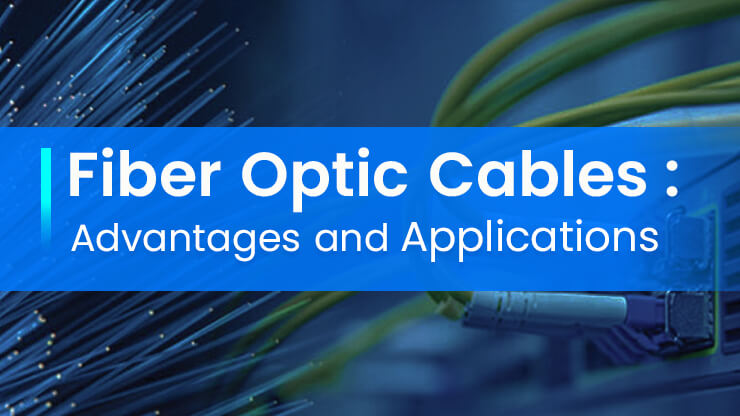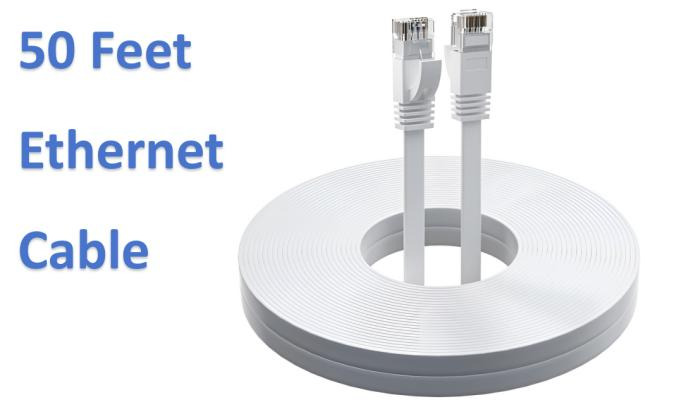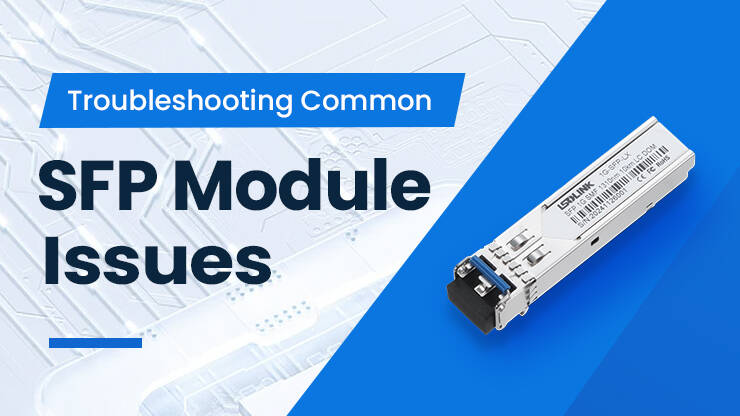The Importance of 100G QSFP28 Optical Modules for DCI
Under the digital wave driven by cloud computing and artificial intelligence, data center intrconnection(DCI) has become the core artery supporting global data exchange. According to statistics, the internal traffic within data centers has accounted for over 76%. Scenarios such as virtual machine migration and real-time backup have given rise to the rigid demand for ultra-low latency and ultra-high bandwith. 100G optical modules, with their high bandwitdth, have broken through the bandwidth bottleneck of traditional 10G/40G optical modules and directly support the modern east-west traffic-dominated DCI architecture.
The distance of DCI links ranges from 10km to 80km. The optical fiber resources and power consumption costs determine the network economic benfits. Although the early CFP coherent modules achieved long-distance transminssion, due to their extremely high power consumption and oversized size; they were difficult to match the requirements of high-density deployment. In contrast, the QSFP28 packaged 100G optical module, with excellent power consumption and size control, has increased the transmission capacity per rack to 6.4Tbps and reduced power consumption by more than 30%, becoming a key product for reducing TCO in ultra-large-scale data centers.
Modern DCI networks have gone beyond physical connections and need to dynamically adapt to changes in business load. The 100G QSFP28 optical module can perceive key parameters such as power, temperature, and bit error rate in real time through DDM and FEC functions, providing underlying data support for SDN automatic optimization.
Analysis of Three Major 100G Single-Mode Optical Modules
What Is a 100G-LR4 Optical Module?
The 100G-LR4 optical module is a core single-mode optical module based on the IEEE 802.3ba standard, specifically designed for 10-20km long-distance DCI interconnection. Its core technology is to convert 4 25 Gbps electrical signals into 4 LAN-WDM optical signals, with wavelengths of 1295.56nm, 1300.05nm, 1304.58nm, and 1309.14nm. These wavelengths are arranged at precise 4.5nm intervals and are multiplexed into a single 100G signal through high-precision MUX/DEMUX devices, which are transmitted over dual-fiber LC single-mode optical fibers.
The key advantage of LR4 lies in its use of EML lasers and TEC. EML separates the laser emission and modulation functions, significantly reducing the signal chirp effect and ensuring a good bit error rate during 10km transmission. TEC maintains the laser at a constant temperature, avoiding wavelength drift-induced crosstalk.
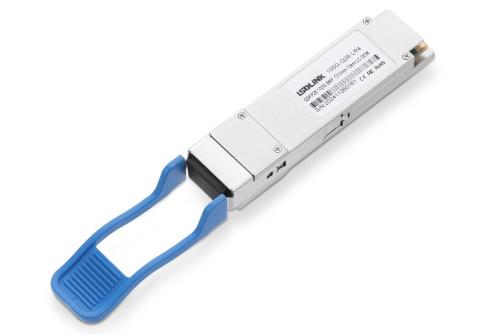
What Is a 100G-CWDM4 Optical Module?
The core of the 100G-CWDM4 optical module adopts CWDM technology. It uses four wavelength channels of 1271nm, 1291nm, 1311nm, and 1331nm, and enables DML lasers. It is targeted at the 2-10km medium-distance DCI market. Compared with LR4, CWDM4 reduces costs through the following points:
Wide wavelength spacing: With a channel spacing of 20nm, the precision requirements for MUX/DEMUX devices can be reduced, and the cost of optical components can be decreased by 40%.
Using DML laser: No need for an external modulator, simplifying the strcture and reducing power consumption.
No TEC temperature control: The 20nm wavelength tolerance allows the laser to operate stably within the range of 0-70℃.
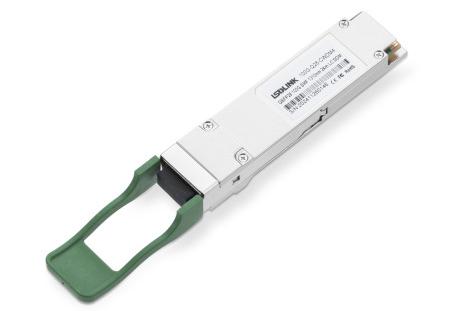
What Is a 100G-PSM4 Optical Module?
The PSM4 optical module is a parallel optical technology defined by MSA for ultra-high-density interconnection within 500 meters. Its essence is the physical layer aggregation of 4 independent channels with a speed of 25 Gbps each. The transmitting end directly drives 4 1310nm DFB lasers with 4 electrical signals, and transmits them through an 8-core MPO/APC interface via 8 single-mode optical fibers. This design enables the PSM4 optical module to support the split use of 4×25 Gbps, providing certain scalability advantages during network upgrades.
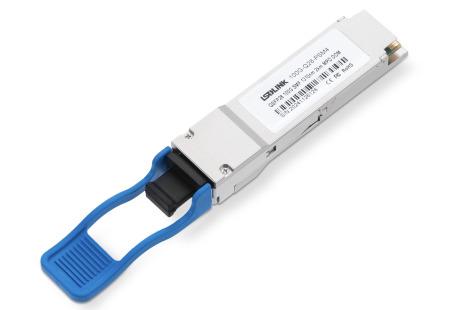
100G LR4, CWDM4, PSM4 Parameter Comparison
| parameter | 100G-LR4 | 100G-CWDM4 | 100G-PSM4 |
| transmission distance | 10-20km (ER4 40km) | 2km | 500m |
| Fiber Type | Duplex LC single-mode | Duplex LC single-mode | MPO-12 single-mode |
| Wavelength | LAN-WDM (4.5nm) | CWDM (20nm) | 1310nm |
| Laser type | EML + TEC temperature control | Uncooled DML | 4×DFB |
| Typical power consumption | 3.5-4W | 2.6-3W | 2.6-3.5W |
| FEC | No (ER4/ZR4 need) | Yes (ensure a 2km bit error rate) | Yes (parallel channel synchronization requirements) |
| Optical interface type | Duplex LC | Duplex LC | 12 core MPO |
| Module cost sensitive points | EML & TEC | MUX/DEMUX | complexity of optical fiber cabling |
Depth resolution
- Technical differences cost structure contrast
LR4: Because of EML laser and precision temperature control system, estimated at 50% more expensive than CWDM4, 10km scene can not be replaced.
CWDM4: 20nm wide wavelength interval lower MUX/DEMUX precision requirement, DML laser without refrigeration, the total cost is lower than the LR4.
PSM4: Module cost is higher, with 4xDFB laser, and the use of MPO APC interface, which can lead to high cost, in the aspect of comprehensive deployment also need to use MPO single-mode jump line, compared with the total cost is higher.
- Power consumption and heat dissipation design
LR4: TEC temperature increased about 1w extra power consumption, to switch duct intensive cooling.
CWDM4/PSM4: Natural DML/DFB laser cooling, high density 1u switch adapter.
- Optical fiber consumption
LR4/CWDM4: Duplex LC single-mode fiber, consume 2 root fiber core.
PSM4: MPO-8 single mode fiber, consume eight root fiber core.
DCI Scene Selection Guide
- Transmission Distance Differences
In the actual construction of DCI networks, the transmission distance is an indispensable and primary decision-making factor when choosing the appropricate single-mode 100G optical module. If the distance between data centers is around 10km, such as in cross-regional interconnections, the LR4 optical module is the ideal choice due to its stable transmission capability of 10km over single-mode fiber. It uses EML lasers, which can effectively resist the influence of chromcatic dispersion and ensure a low bit error rate for long-distance transmission. When the transmission distance is reduced to within 2km, such as in intracampus interconnections, the advantages of the CWDM4 optical module come to the fore. By utilizing coarse wavelength division multiplexing technology a single fiber can carry foue different wavelength signals, balancing transmission idstance and cabing costs. For short-distance direct connections of 500 meters, the PSM4 optical module sands out as the best option due to its low cost and high-density deployment characteristics. It achieves parallel transmission through an 8-core MPO interface, although it requires more fiber resources, it offers superior scalability in short-distance scenarios.
- Cost Control
In terms of cost, the LR4 optical module, due to its adoption of high-performance EML lasers and TEC, has a relatively high hardware cost. However, it can reduce the investment in relay equipment and lower long-term operation and maintenance costs in long-distance transmission. CWDM4 has a wider wavelength interval compared to LR4 and requires lower precision of MUX/DEMUX, which can reduce hardware costs and is more advantageous in medium-distance scenarios. PSM4 uses 4xDFB lasers but does not require wavelength division technology and adopts MPO APC interfaces. Its cost is relatively higher than CWDM4 but lower than LR4. When using MPO single-mode fiber, the total deployment cost is also relatively high. However, due to its separable feature, it is more suitable for data center networks with strong scalability.
- Network Architecture Adaptability
The core layer network has high requirements for stability and transmission distance, and the LR4 module is more suitable; the access layer network focuses on cost and flexibility, and CWDM4 and PSM4 can better meet the needs. In addition, when selecting, it is necessary to ensure that the selected optical modules comply with industry standards such as IEEE 802.3bm and maintain good compatibility with existing equipment to avoid interoperability issues.
Common Questions and Answers (FAQ)
Q: Does the 8-fiber MPO wiring of the PSM4 module significantly increase the deployment cost?
A: Compared to the CWDM4 module, the PSM4 optical module currently has a higher cost and requires MPO fiber. The total deployment cost is higher, but it has good scalability and can connect 4 25G optical modules through branch cables, making it more suitable for scenarios with higher scalability requirements, such as those without such requirements, one can choose the more cost-effective CWDM4 module.
Q: Can the LR4 module be extended to 80km through an amplifier? Is it feasible to replace ER4?
A: If the LR4 is used in the 80km scenario, multiple module connections or expensive external EDFA amplification and DCM compensation modules are required, resulting in a higher total cost compared to ER4. Choosing the appropriate ZR4 optical module is more suitable for the 80km scenario.
Q: Will the mixed deployment of CWDM4 and LR4 cause wavelength conflicts?
A: Yes, there is an interference risk. The 1271nm/1291nm channel of CWDM4 and the 1295.56nm/1300.05nm channel of LR4 are adjacent. When mixed transmission, a >4nm isolation band needs to be inserted.



